Graphic:
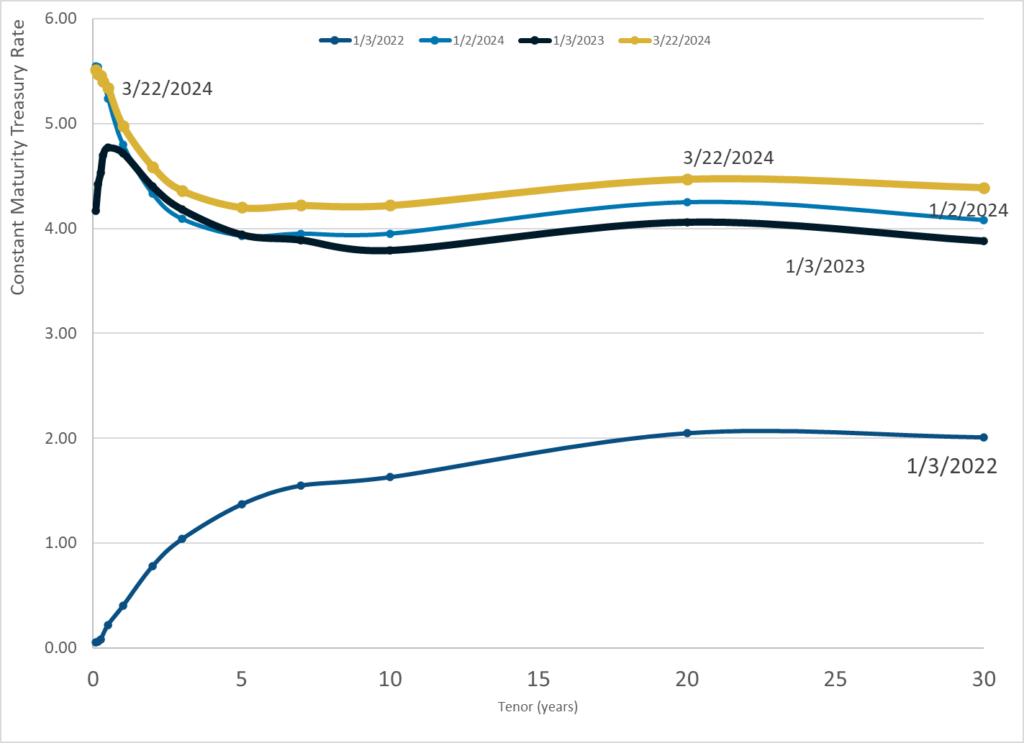
Publication Date: Treasury Dept
Publication Site: 22 Mar 2024
All about risk
Graphic:

Publication Date: Treasury Dept
Publication Site: 22 Mar 2024
Graphic:
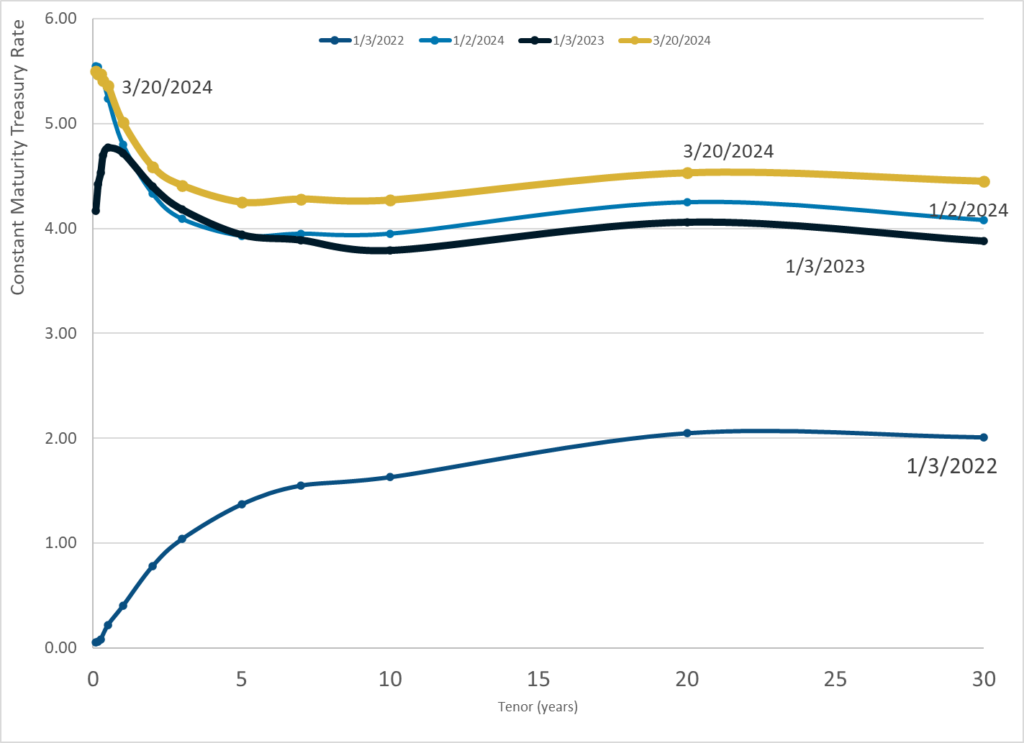
Publication Date: 20 Mar 2024
Publication Site: Treasury Dept
Link:https://www.city-journal.org/article/review-of-work-retire-repeat-by-teresa-ghilarducci
Excerpt:
Before she exited the Republican primary race, Nikki Haley advocated gradually increasing the retirement age to match the growth in life expectancy. Her political rivals swiftly criticized her proposal, but it enjoys widespread support among those looking to rein in soaring entitlement costs. A new book by economist Teresa Ghilarducci, Work, Retire, Repeat, offers reasons to seek an alternative path to reform.
Pay-as-you-go retirement systems such as Social Security or Medicare use taxes on current workers to pay benefits to retirees. Even if individuals on average fully pay for what they later get, such an arrangement will not be sustainable if declining birth rates and rising life expectancy reduce the ratio of workers to retirees. In 1960, there were five workers for each retiree. By 2000, the ratio had fallen to three-to-one. By 2040, there will be only two workers for each retiree. Raising the retirement age would both reduce the cost of benefits and increase payroll tax revenues to pay for them.
But Ghilarducci’s book argues against pushing back retirement. She suggests that, whereas policymaking elites view retirement as boring, low-paid workers typically can’t wait for relief from “heavy lifting, crushing work schedules, arbitrary changes in work duties, and the fear of being laid off.”
Ghilarducci acknowledges that employment can be a valuable source of meaning, personal identity, achievement, social interaction, and structure in people’s lives. But she disputes the claim that the correlation of retirement with declining mental health proves that it is bad for people.
….
By allowing younger workers to opt for a lower payroll tax rate for the remainder of their careers, in return for a uniform safety-net benefit when they reach retirement, Social Security could be made more effective at preventing poverty while also being less of a burden on the young. Such a benefit structure would likely also motivate higher-earning workers to retire later than the poor—the arrangement for which Ghilarducci provides her strongest arguments.
Author(s): Chris Pope
Publication Date: 14 Mar 2020
Publication Site: City Journal
Graphic:
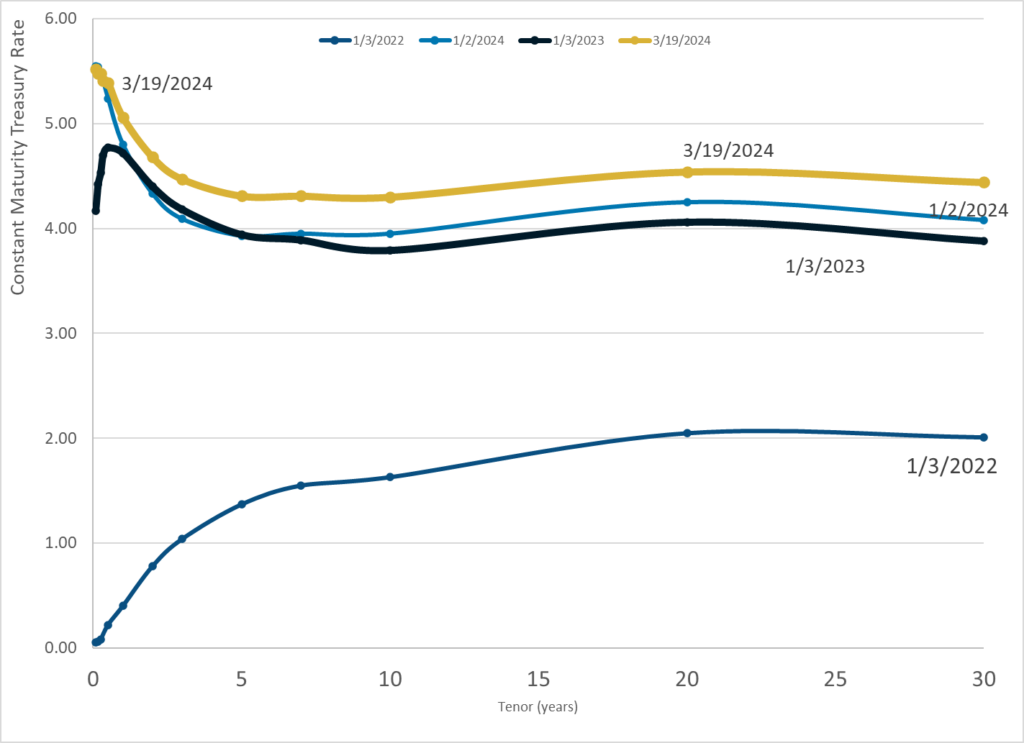
Publication Date: 20 Mar 2024
Publication Site: Treasury Dept
Link: https://www.wsj.com/us-news/education/harvard-investigation-francesa-gino-documents-9e334ffe
Excerpt:
A Harvard University probe into prominent researcher Francesca Gino found that her work contained manipulated data and recommended that she be fired, according to a voluminous court filing that offers a rare behind-the-scenes look at research misconduct investigations.
It is a key document at the center of a continuing legal fight involving Gino, a behavioral scientist who in August sued the university and a trio of data bloggers for $25 million.
The case has captivated researchers and the public alike as Gino, known for her research into the reasons people lie and cheat, has defended herself against allegations that her work contains falsified data.
The investigative report had remained secret until this week, when the judge in the case granted Harvard’s request to file the document, with some personal details redacted, as an exhibit.
….
An initial inquiry conducted by two HBS faculty included an examination of the data sets from Gino’s computers and records, and her written responses to the allegations. The faculty members concluded that a full investigation was warranted, and Datar agreed.
In the course of the full investigation, the two faculty who ran the initial inquiry plus a third HBS faculty member interviewed Gino and witnesses who worked with her or co-wrote the papers. They gathered documents including data files, correspondence and various drafts of the submitted manuscripts. And they commissioned an outside firm to conduct a forensic analysis of the data files.
The committee concluded that in the various studies, Gino edited observations in ways that made the results fit hypotheses.
When asked by the committee about work culture at the lab, several witnesses said they didn’t feel pressured to obtain results. “I never had any indication that she was pressuring people to get results. And she never pressured me to get results,” one witness said.
Author(s): Nidhi Subbaraman
Publication Date: 14 March 2024
Publication Site: WSJ
Graphic:
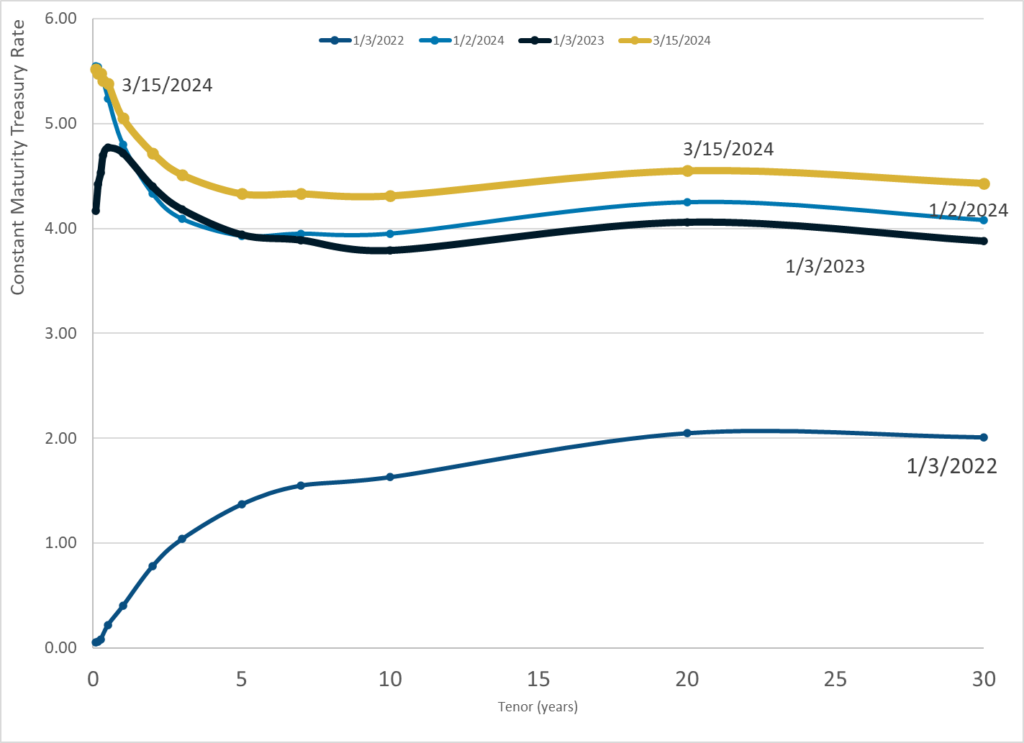
Publication Date: 15 Mar 2024
Publication Site: Treasury Dept
Link: https://www.biorxiv.org/content/10.1101/704080v3
PDF: https://www.biorxiv.org/content/10.1101/704080v3.full.pdf
Graphic:
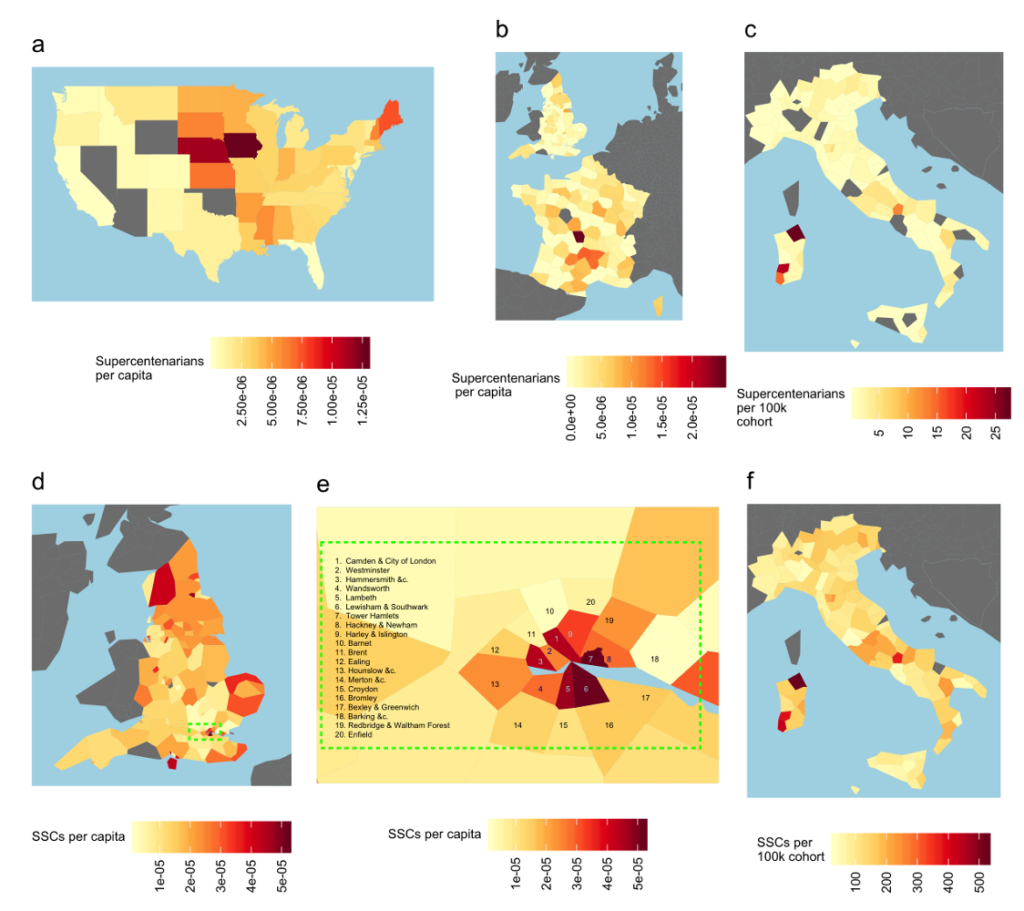
The observation of individuals attaining remarkable ages, and their concentration into geographic sub-regions or ‘blue zones’, has generated considerable scientific interest. Proposed drivers of remarkable longevity include high vegetable intake, strong social connections, and genetic markers. Here, we reveal new predictors of remarkable longevity and ‘supercentenarian’ status. In the United States, supercentenarian status is predicted by the absence of vital registration. The state-specific introduction of birth certificates is associated with a 69-82% fall in the number of supercentenarian records. In Italy, England, and France, which have more uniform vital registration, remarkable longevity is instead predicted by poverty, low per capita incomes, shorter life expectancy, higher crime rates, worse health, higher deprivation, fewer 90+ year olds, and residence in remote, overseas, and colonial territories. In England and France, higher old-age poverty rates alone predict more than half of the regional variation in attaining a remarkable age. Only 18% of ‘exhaustively’ validated supercentenarians have a birth certificate, falling to zero percent in the USA, and supercentenarian birthdates are concentrated on days divisible by five: a pattern indicative of widespread fraud and error. Finally, the designated ‘blue zones’ of Sardinia, Okinawa, and Ikaria corresponded to regions with low incomes, low literacy, high crime rate and short life expectancy relative to their national average. As such, relative poverty and short lifespan constitute unexpected predictors of centenarian and supercentenarian status and support a primary role of fraud and error in generating remarkable human age records.
Author(s): Saul Justin Newman
https://doi.org/10.1101/704080
Publication Date: 14 Mar 2024
Publication Site: bioRXiV
Link: https://www.scientificdiscovery.dev/p/20-so-many-great-things-you-missed
Graphic:
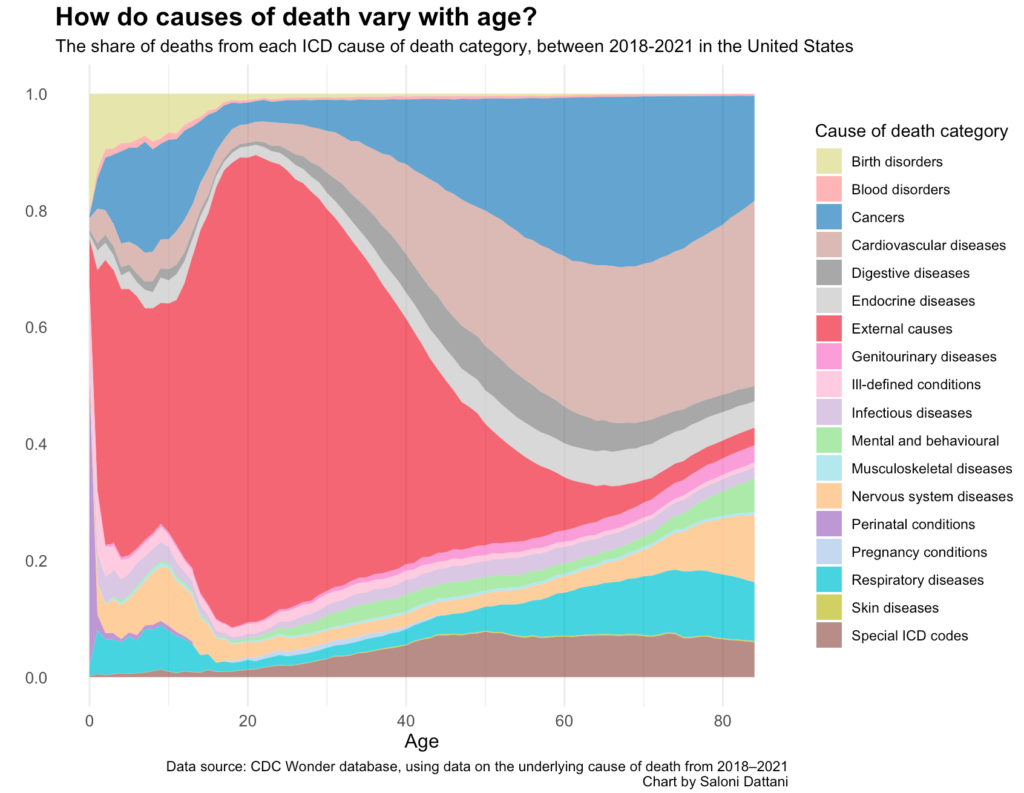
Excerpt:
You can see that, in childhood, in the US, the most common causes of death are ‘external causes’. This is a broad category that includes accidents, falls, violence, and overdoses, and is shown in red. But there’s also a notable contribution from birth disorders (in muted green), childhood cancers (in blue), and respiratory diseases (in cyan).
The share of deaths in childhood from cancers stood out to me. We’ve seen lots of progress against many childhood cancers over the last 50 years — notably in treating leukemia, brain cancers, kidney cancers, lymphomas, and retinoblastoma — but this is a reminder that there’s still further to go.
From adolescence until middle-age, ‘external causes’ are now the overwhelming cause of death. Around 80% of deaths at the age of 20 in the US are due to external causes. These result from causes such as accidents, violence, and overdoses.
At older ages, diseases rise in importance. Causes of death also become more varied, although cardiovascular diseases and cancers are the most common.
You might also be wondering about the brown category at the bottom, called ‘special ICD codes’. That’s a placeholder category in the system for deaths caused by new diseases — predominantly Covid-19, since the data spans 2018 to 2021.3
Author(s): SALONI DATTANI
Publication Date: 16 Mar 2022
Publication Site: Scientific Discovery on substack
Graphic:
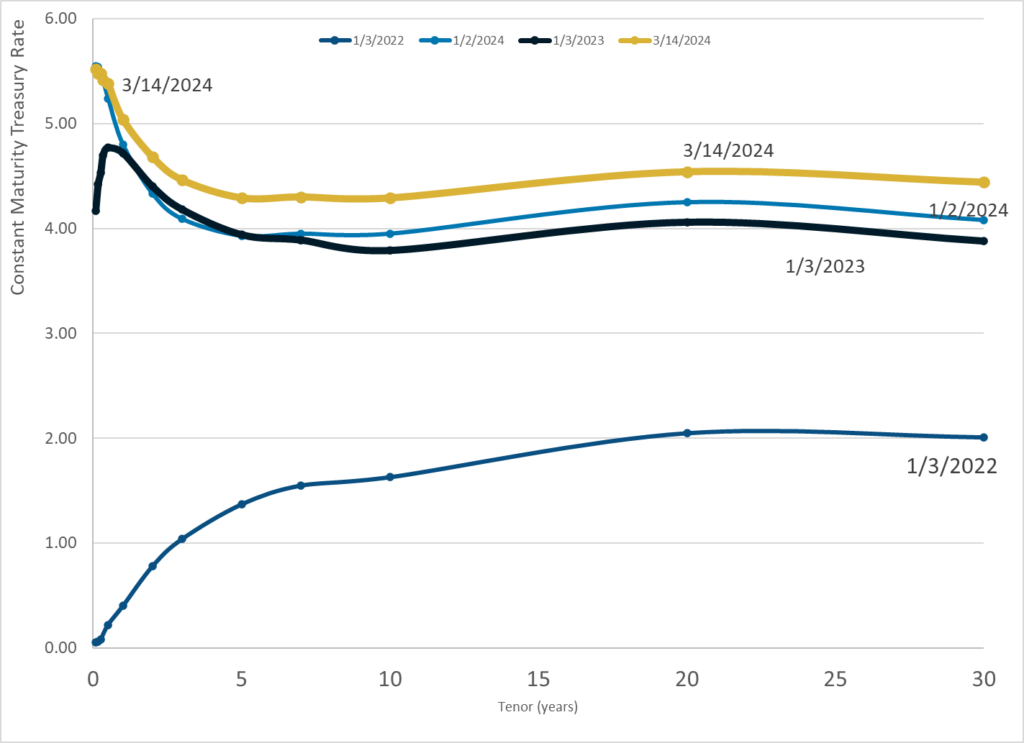
Publication Date: 14 Mar 2024
Publication Site: Treasury Dept
Link: https://www.governing.com/finance/muni-bond-games-and-the-irs-lurking-arbitrage-vampires
Excerpt:
For example, Oakland, Calif., cleverly figured out in 1985 that it could issue tax-exempt bonds to fund its underwater pension plan, the proceeds of which it in turn would invest in normal pension portfolio holdings like taxable stocks and corporate bonds with a higher long-term return. It was a strategy almost certain to make a profit over time, even with the ups and downs in the stock market, but it didn’t take long for the IRS to put an end to that ploy as an abuse of the tax exemption. Thereafter, the IRS ruled, such pension bonds must be taxable.
Likewise, the arbitrage police have played cops-and-robbers with clever public financiers who invest their cash during construction periods at interest rates higher than their tax-exempt cost of money. Using today’s interest rate levels, for example, a tax-exempt 20-year AAA-rated bond can be issued with coupons around three-and-a-half percent and the proceeds reinvested in Treasury bills and notes at 4 to 5 percent. In almost any year like this one, there’s a profit to be gleaned when borrowing tax-exempt and reinvesting at taxable rates.
….
There is also a new controversy brewing in a niche sector of the muni bond market, in which issuers of taxable bonds are finding an opportunity to refinance at lower tax-exempt rates. Investors are suing them. It’s premature to guess how this issue will be resolved in the courts, but worth watching.….
As interest rates drift lower in tandem with hoped-for disinflation, muni bond professionals are starting to chat up the idea that soon we’ll see a wave of advance refundings, in which a municipality can refinance its debt at a lower interest rate. In corporate America, the finance team must usually wait until the issue’s maturity or call date before refinancing. In muni-land, however, there is a unique situation that is peculiar to the tax-exempt world: the opportunity to issue new bonds to replace the old ones at a lower interest rate before their scheduled call date — typically within 10 years after issuance — by setting up an escrow fund to pay off the original debt when it is callable.
It doesn’t take a math or market genius to figure out that this advance refunding strategy is susceptible to abuses. In theory and previously in practice, it could be repeated several times over the life of the original bonds: wash, rinse and repeat. So the IRS caught on to this and Congress put a limit — of one — on such deals. To accommodate this unique feature of the muni market, the Treasury Department even created a special class of its own securities, known as the State and Local Government Series (SLGS, or “slugs” in industry jargon), which bear interest rates equal to the new borrowing rate to preclude the arbitrage profit gambit.
The political challenge for municipal officials today is that underwriters and advisers are keen to promote these advance refundings as soon as they become feasible. Some will compete with each other to make the first pitch to win an engagement even if it’s not optimal longer term. The motto of some hucksters is “whoever gets to the decision-makers first, wins.” All they really want is the engagement fees; to them, a dollar earned today is worth more than a dollar tomorrow, so they get lathered up without necessarily showing their clients the potential to save even more if they wait a couple years for even lower rates. This year and next could be just such a time period, depending on when you think the next national recession will occur.
Mostly it will be the muni bonds sold in 2022 and early 2023, when interest rates were peaking (above 4 percent on AAA paper and maybe 5 percent for lower ratings), that the advance-refunding promoters will pitch. Just remember that the IRS rules now prohibit multiple advance refundings: It’s one bite of the apple, and there will be an opportunity cost for jumping the gun ahead of lower long-term interest rates in future years. Although short-term interest rates are expected to decline, it’s not so obvious that the longer end of the Treasury and muni bond yield curves will follow in this business cycle, at least until the next recession. Refundings are almost always timely in recessions, but can be premature in the middle of an interest rate cycle.
Author(s): Girard Miller
Publication Date: 13 Mar 2024
Publication Site: Governing
Graphic:
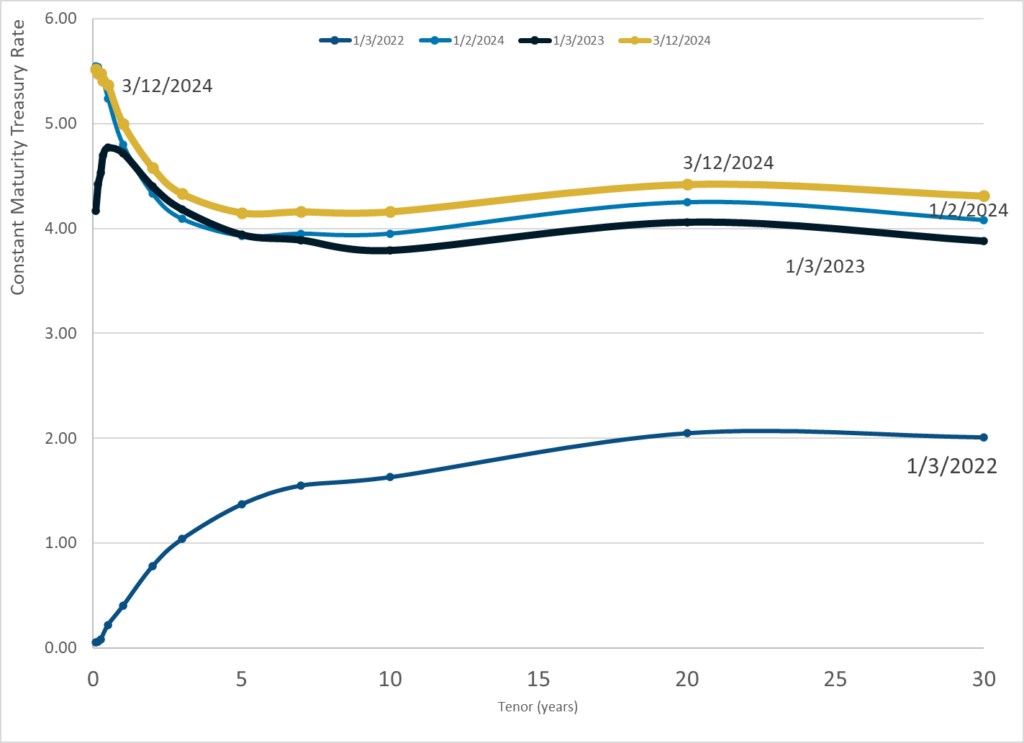
Publication Date: 12 Mar 2024
Publication Site: Treasury Dept
Excerpt:
From the very early days of the pandemic, brain fog emerged as a significant health condition that many experience after COVID-19.
Brain fog is a colloquial term that describes a state of mental sluggishness or lack of clarity and haziness that makes it difficult to concentrate, remember things and think clearly.
Fast-forward four years and there is now abundant evidence that being infected with SARS-CoV-2 – the virus that causes COVID-19 – can affect brain health in many ways.
In addition to brain fog, COVID-19 can lead to an array of problems, including headaches, seizure disorders, strokes, sleep problems, and tingling and paralysis of the nerves, as well as several mental health disorders.
Author(s): Ziyad Al-Aly
Publication Date: 28 Feb 2024
Publication Site: The Conversation